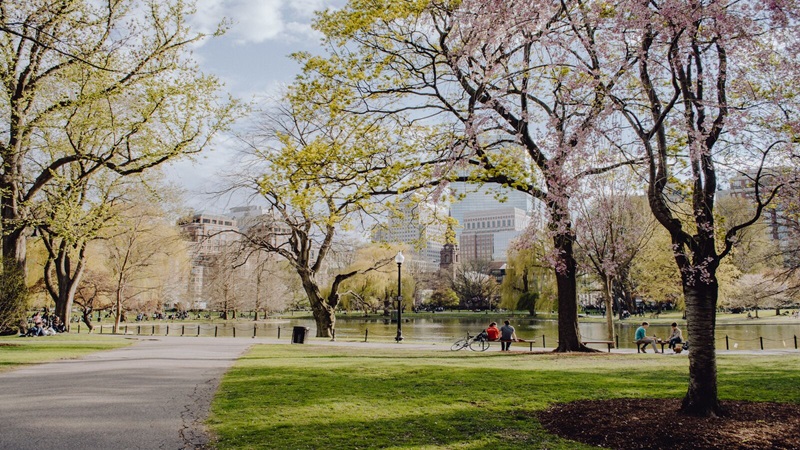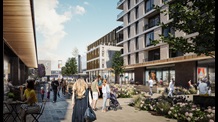Creating places that support good health
For the right reasons, there is a lot of focus on the construction of new hospitals and healthcare facilities in our industry. Quite simply, we need more world-class resources to serve a growing global population.
However, recent research from The Health Foundation, a UK-based think tank, has thrown the requirement (and opportunity) to support people before they get to point of needing hospital care into sharp focus.
The research shows that 9.1 million people in England are projected to be living with major illness by 2040, an increase of 2.5 million people compared to 2019. While this is country-specific data, the researchers are clear this is a global challenge.
Importantly, a large proportion of this expected growth will be cases of people with conditions such as anxiety and depression, chronic pain and diabetes. All of these are predominantly managed outside hospitals via primary care and community services. Sensibly, the report emphasises the need for investment in both, along with a focus on prevention and early intervention.
Of course, the construction and built environment industries will respond to the call (as they always do) and build the facilities needed for early intervention. However, how can we have a bigger impact when it comes to prevention?
Prevention through placemaking
COVID-19, or more specifically the recovery from it, placed a spotlight on the value of good quality public places and community facilities. Nations around the world rode the wave and we saw positive case studies emerge, such as summer road closures to facilitate alfresco dining, which drives a seasonal boost to local economies. Even so, this new research is a stark reminder that we must do more.
The scope of the opportunity is broad and individual circumstances vary, but there are three interlinked cornerstones that stand out as useful starting points.
Encourage active travel
There are plenty of studies providing compelling evidence that exercising outside (particularly in green spaces) has a positive effect on mental and physical health. In urban areas, where scope for new development is greatest (and scope for greening limited), the creation of infrastructure promoting active travel not only enables realistic opportunities for exercise but can also create healthier, happier places.
Indeed, studies across Europe have found cities with high numbers of people regularly cycling, such as Amsterdam, Antwerp, Vienna and Munich, enjoy higher rates of life satisfaction. A similar correlation has been seen in a study of cities in England.
Efforts need to be coordinated across the built environment. Attention will often be focused on road infrastructure, but developers of commercial buildings must think about facilities such as cycle storage – both short and long stay - and shower facilities. If these are lacking, it makes cycling to work a less attractive prospect.
And let’s not forget pedestrians. Whether walking or running, people want to feel safe when out and about. The creation of public realm, designed in consultation with local police services and interest groups that, for instance, increase mobility and a feeling of safety is a must.
Create something pleasant
The Health Foundation research findings came in the same week the UK Government recommitted to its plans to build one million new homes over the course of the current Parliament – most of these will be in cities. It’s easy to see how placemaking could suffer if unit volume is prioritised over a holistic community approach.
It is vital then that the final product feels complete, with materials, planting and space combining to form a single, cohesive output that ensures living, working and visiting the area are all positive experiences. A commitment to improving and maintaining the natural environment can have a marked impact on how an individual feels - studies have shown that even spending short periods in nature can significantly lower our levels of cortisol, a stress hormone.
We must acknowledge that we have a responsibility during delivery too. The communities that already exist around our projects need to be supported and treated as neighbours throughout construction. In practice this could mean a commitment to dust suppression and keeping roads clean, or providing pocket parks as part of meanwhile use initiatives. Irrespective of the steps taken to maintain and enhance the physical environment, local community members need and deserve clear, open and honest communication channels to express concerns and suggest ideas. Though good community engagement we can help to ease concerns and support the wellbeing of local people.
Enable social interaction
Meanwhile, within these created spaces it is also essential that there are areas for local people to both meet and gather. There are many studies showing how variety and diversity of people’s daily social interactions directly correlate with their reported happiness.
Public plazas with seating, access to drinking water and accessible toilet facilities, and indoor areas for options when the weather is bad are just some of the considerations that will encourage people to use a place as a social destination.
And, while active travel will have been considered as part of a holistic approach, access via public transport is also important in making sure people can come and go easily.
A part of the solution
We all know that tackling a health crisis goes beyond the quality of the built environment, but as an industry we often pride ourselves on our collaborative nature. And so, we must recognise the positive influence we can have on the physical and mental wellbeing of people by designing and creating spaces that promote behaviours to combat illness.
In doing so, we are playing our part in helping healthcare providers to stem the tide and focus their efforts on critical medical cases.
This article was originally published via BE News.











